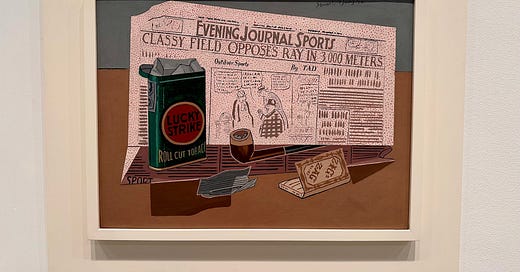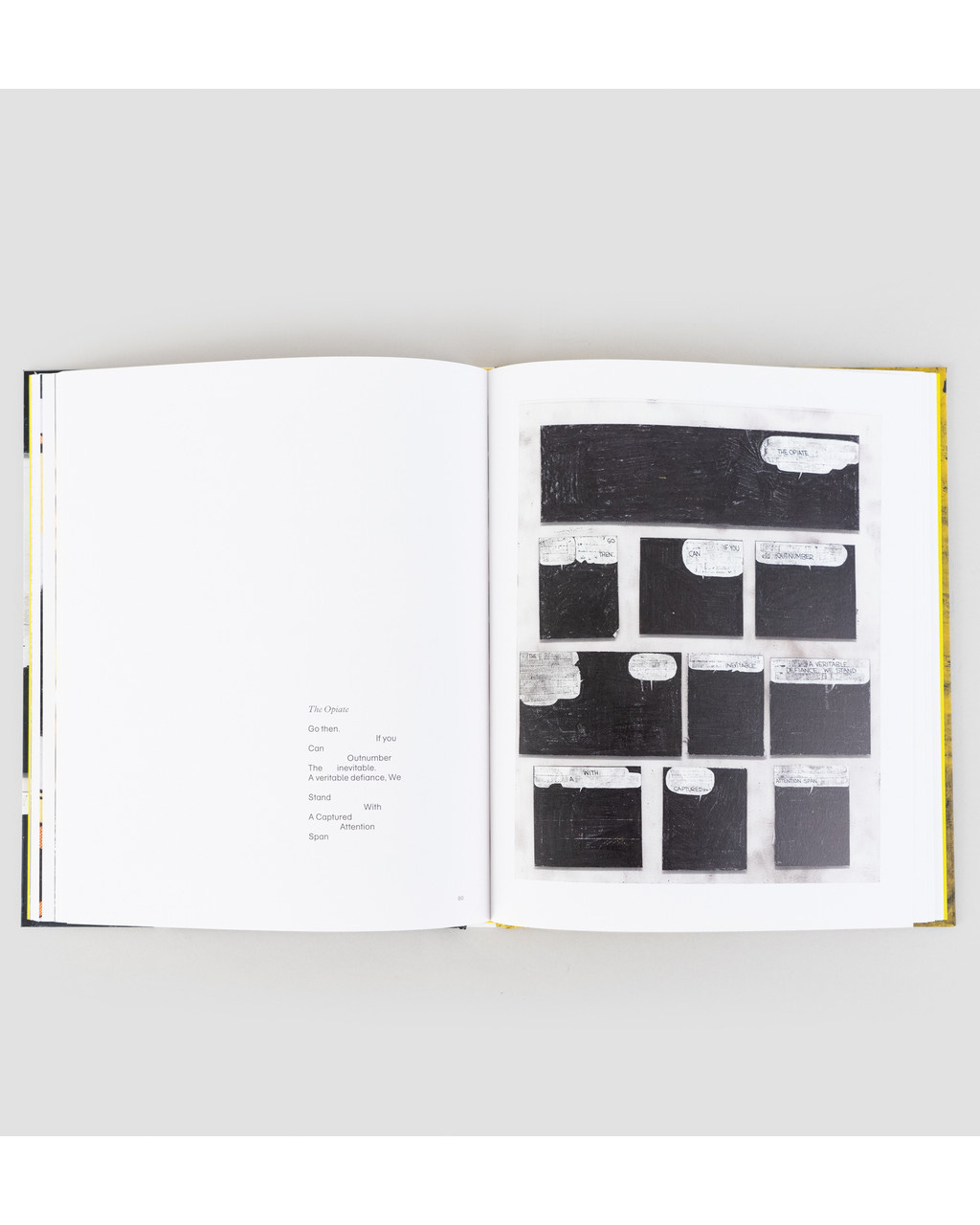“What proves the wonderful singularity of the writer, is that during the holiday in question, which he takes alongside factory workers and shop assistants, he unlike them does not stop, if not actually working, at least producing. So that he is a false worker, and a false holiday-maker as well. One is writing his memoirs, another is correcting proofs, yet another is preparing his next book. And he who does nothing confesses it as truly paradoxical behaviour, an avant-garde exploit, which only someone of exceptional independence can afford to flaunt. One then realizes, thanks to this kind of boast, that it is quite 'natural' that the writer should write all the time and in all situations. First, this treats literary production as a sort of involuntary secretion, which is taboo, since it escapes human determinations: to speak more decorously, the writer is the prey of an inner god who speaks at all times, without bothering, tyrant that he is, with the holidays of his medium. Writers are on holiday, but their Muse is awake, and gives birth non-stop.” - Roland Barthes, “The Writer on Holiday”
Classes start next week and I am officially back on contract this week, in 40 hours of meetings. Summer is over, even though it doesn’t technically end for several more weeks. Summer is over, and so is any holiday-making or false holiday-making. Nora has been finishing up her masters degree, and I have made a grand show of false holiday-making this summer, working in Kyoto, teaching in Glasgow, and teaching in Santa Fe. One of the joys of working around the world has been popping in to exhibits and shows in museums, galleries, libraries, cafes, etc. I couldn’t help but notice so many paintings of comics. Is the “lowbrow” becoming “highbrow”? My curiosity was piqued about how comics are used in other art forms—and I also wondered why comics?
In his 2006 book An Unidentified Cultural Object, comics theorist Thierry Groensteen critiques the visual art of comics through “symbolic handicaps.” He argues that comics suffer from their hybrid nature, merging text and image into a form seen as a lesser art. They are often perceived as inherently juvenile, with adults engaging with them as a means to delay maturity. (sigh) Comics, he writes, are frequently linked with caricature, which is not considered a fine art. Groensteen also highlights the issue of visual impact, noting that the multiplicity and small scale of comic images can undermine their ability to capture and hold attention. (Walter Benjamin might also point out that the duplication of comics interferes with their perceived value—as art that is too accessible.)
At the Hirshhorn Museum in DC, I encountered Tony Lewis’s blackout poetry of the funny pages. Blackout poetry involves selecting and erasing (or blacking out, or redacting) words from a pre-existing text—such as newspaper articles or government documents—to create a new poetic composition from the remaining words. Lewis used strips, such as Calvin and Hobbes, to form the base of his poems. I love how he leaves the speech bubble in tact—as the Groensteen points out, artists of the 1960s, such as Jasper Johns, Robert Rauschenberg, and Oyvind Fahlstrom realized that “the secondary machinery of the comics—the panels and balloons and onomatopoeia—began to have an iconic force greater than any image they might contain.” Even an empty speech says something. Leaving the panels and the balloons in tact also forces the “duration” of the comic to remain, implying a sense of time.
At the New Mexico Museum of Art, one of Billy Schenck’s paintings is on display. Here the audience is caught in a still panel, imagined between a sequence of images, or, put otherwise, imagined in the middle of a story. The narrative is is the formal element played with here. It is assumed, and the audience only has questions—about the characters, about chasing destiny.
I would love to see more examples of artists appropriating comics (or their formal elements) or manipulating comics in paintings, poetry, etc. What comics-art have you seen out in the world?









John Baldessari did some comic type things where he combined an image with a word or two. It created a sort of single panel comic that made sense and didn’t make sense at the same time. For example: https://www.google.com/search?sca_esv=c14fbbbc00866f01&rlz=1CDGOYI_enUS895US895&hl=en-US&sxsrf=ADLYWIKm9ltZWEon4bcU3ldPjN1nLbUVuw:1723657630495&q=baldessari+feelings&udm=2&fbs=AEQNm0DvD4UMlvdpwktgGj2ZHhIXi58ra1MCmgeKkVE8y_uPCA_VArK8eDJ3eXUe-YWeaCChH2YkF0vz5NWgjmXujikWLEFS5d3wwO0mNJ5WAvP7FOuYx5Bqc97RyvnkUSFCuqEUSZ-dOdnmIfNaaT5UsbJgesxPu4sR5Mfm2KCiVlnc41VFEFFm19BGGkVxBlgwP6f9te4miLYI1WJHeREnqDmTbw8QdQ&sa=X&ved=2ahUKEwj3vJ6GhfWHAxVfmIkEHUZPFC8QtKgLegQIDhAB&biw=375&bih=634&dpr=3